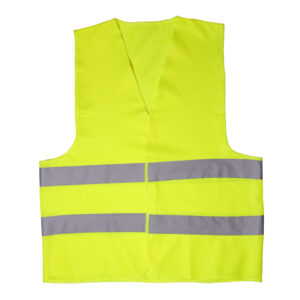See and Be Seen for Safety’s Sake this Winter
By Eva Briggs, M.D.
As I write this in late September, the daylight hours are becoming shorter. Just a few weeks ago it was still light out when I left work in the evening. Now it’s pitch dark.
Now the evening is often foggy and soon snow will be swirling.
That translates to poor visibility and dangerous conditions for runners, dog walkers, snow shovelers and others spending time outdoors. Proper gear enhances the ability of motorists to detect pedestrians and reduce the chance of accidents. Almost every night someone in dark clothes without lights or reflector suddenly looms on the roadside, not realizing that they are nearly invisible.
So first, consider the color of your clothing.
Light colors show up better in the dark. Though perhaps not white in the winter, owing to its similarity to snow. Bright colors — think fluorescent yellow-green, fluorescent orange-red and fluorescent pink — stand out in daylight.
In fact, testing by ANSI (American National Safety Institute) suggests that fluorescent yellow green is the most visible in daylight, though the fluorescent orange-red and fluorescent pink become increasingly visible under low-light conditions.
For the science nerds, the wavelength of that most visible yellow green is about 550 nanometers. It turns out that the light-detecting cells in our retinas are most sensitive to light at 550 nanometers. Add reflective stripes to enhance nighttime visibility. Amazon sells lightweight high-viz vests for as little as $10, though you can spend more if you desire a sturdier model with more features.

You might as well get two. Toss one in your car in case of a nighttime breakdown or other emergency. And if you don’t want a vest, you can get a belt, armbands or wristbands.
Next add some light. You can carry a flashlight or wear a headlamp. Or you can go a bit more technical with armbands, clip on lights, even shoe lights. Most lights have a flashing setting to make you stand out even better. And you can get a light up vest. I own one made by Nox Gear with a rechargeable battery. It has lasted several years now.
A few people take their bicycles out in the winter. If you do, strap on a headlight and taillight. For best visibility, also add wheel lights.
If you walk a dog, you’ll want to make sure he or she is visible too.
One of my dogs is black and therefore disappears at night. The other is small and brown and can scarcely be seen against dry brown leaves. But for just a few dollars, they’re each decked out in a high-viz reflective dog vests for their nighttime walks.
Other options for canine safety include lighted collars, lighted leashes, and lights that snap onto the dog’s collar.
An advantage of the vest is that it won’t be covered by long hair like a lighted collar or tag. Don’t forget proper footwear to reduce the chance of slipping and falling. Several brands of shoes now sell footwear with Vibram arctic grip soles. They’re s u p p o s e d t o grip even wet ice to prevent falls. They’re pricey, but if they really work, they’re cheaper than a doctor ’s bill and missed day at work. Other options include various strap on traction devices, such those made by YakTrax and Katoohla. If you are at all unsteady on your feet, add a trekking pole or two, or a cane.
Winter is getting started, so it’s time to equip yourself for safety to reduce your chance of becoming an accident victim.
